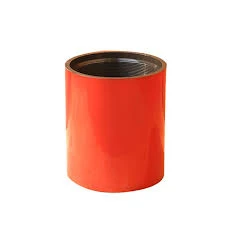- Afrikaans
- Albanian
- Amharic
- Arabic
- Armenian
- Azerbaijani
- Basque
- Belarusian
- Bengali
- Bosnian
- Bulgarian
- Catalan
- Cebuano
- Corsican
- Croatian
- Czech
- Danish
- Dutch
- English
- Esperanto
- Estonian
- Finnish
- French
- Frisian
- Galician
- Georgian
- German
- Greek
- Gujarati
- Haitian Creole
- hausa
- hawaiian
- Hebrew
- Hindi
- Miao
- Hungarian
- Icelandic
- igbo
- Indonesian
- irish
- Italian
- Japanese
- Javanese
- Kannada
- kazakh
- Khmer
- Rwandese
- Korean
- Kurdish
- Kyrgyz
- Lao
- Latin
- Latvian
- Lithuanian
- Luxembourgish
- Macedonian
- Malgashi
- Malay
- Malayalam
- Maltese
- Maori
- Marathi
- Mongolian
- Myanmar
- Nepali
- Norwegian
- Norwegian
- Occitan
- Pashto
- Persian
- Polish
- Portuguese
- Punjabi
- Romanian
- Russian
- Samoan
- Scottish Gaelic
- Serbian
- Sesotho
- Shona
- Sindhi
- Sinhala
- Slovak
- Slovenian
- Somali
- Spanish
- Sundanese
- Swahili
- Swedish
- Tagalog
- Tajik
- Tamil
- Tatar
- Telugu
- Thai
- Turkish
- Turkmen
- Ukrainian
- Urdu
- Uighur
- Uzbek
- Vietnamese
- Welsh
- Bantu
- Yiddish
- Yoruba
- Zulu
bull plug pipe fitting
Understanding Bull Plug Pipe Fittings
In the realm of plumbing and piping systems, fittings play a crucial role in connecting various components to ensure the efficient flow of liquids and gases. Among these fittings, the bull plug is a vital accessory that serves a specific purpose in both residential and industrial applications. This article will delve into the characteristics, uses, and advantages of bull plug pipe fittings, providing a comprehensive understanding of their importance in modern piping systems.
What is a Bull Plug?
A bull plug is a type of pipe fitting that is used to close off the end of a pipe. It is designed to fit snugly into the opening of a pipe, effectively sealing it and preventing the flow of fluids through that section. Unlike standard plugs, bull plugs typically feature a broader head that provides a larger surface area for sealing. This design allows for easier installation and removal, making it a preferred choice in various plumbing applications.
Bull plugs can be made from a variety of materials, including plastic, brass, stainless steel, and iron, depending on the specific requirements of the system they are being used in. The choice of material often depends on factors such as pressure, temperature, and the nature of the fluid involved.
Uses of Bull Plug Pipe Fittings
Bull plugs are commonly used in several applications, including
1. Sealing Pipe Ends One of the primary functions of a bull plug is to seal the ends of pipes when they are not in use. This prevents leakage and contamination of the system, especially in cases where pipes are temporarily taken out of service.
2. Pressure Testing Bull plugs are often used during pressure testing of piping systems. By sealing off the ends of the pipes, technicians can pressurize the system to check for leaks and ensure that it can handle the intended operational pressures.
3. System Maintenance For maintenance and repair work, bull plugs can be employed to isolate sections of a plumbing system. This allows other areas to remain operational while specific repairs are carried out without affecting the entire system.
bull plug pipe fitting

4. Water and Gas Distribution In water and gas distribution systems, bull plugs are essential for preventing backflow and ensuring safe operation. They help to maintain the integrity of the system and reduce the risk of leaks.
Advantages of Bull Plug Pipe Fittings
The use of bull plugs in piping systems offers several advantages, including
1. Easy Installation and Removal The broad head of the bull plug makes installation and removal straightforward, minimizing downtime during maintenance or repairs.
2. Enhanced Sealing The design of bull plugs provides an excellent seal, significantly reducing the risk of leaks compared to other types of fittings.
3. Versatility Bull plugs can be used in a wide range of applications, from residential plumbing to complex industrial systems. Their adaptability to various materials and environments adds to their appeal.
4. Cost-Effective Given their simple design and functionality, bull plugs are often a cost-effective solution for pipe sealing. Their durability means that they can provide long-lasting service without frequent replacements.
5. Safety In gas or high-pressure systems, the use of reliable fittings like bull plugs enhances safety by preventing accidental discharges or leaks that could pose health and environmental risks.
Conclusion
Bull plug pipe fittings are an integral component of many plumbing and industrial systems. Their ability to effectively seal pipe ends and facilitate maintenance makes them invaluable for ensuring the safety and efficiency of liquid and gas transport. With various materials and sizes available, bull plugs can adapt to specific needs, reinforcing their position as a staple in the piping industry. Whether used for pressure testing, maintenance, or regular operation, understanding the functionality and advantages of bull plugs can help professionals make informed decisions that enhance system performance and safety.
-
Tubing Pup Joints: Essential Components for Oil and Gas OperationsNewsJul.10,2025
-
Pup Joints: Essential Components for Reliable Drilling OperationsNewsJul.10,2025
-
Pipe Couplings: Connecting Your World EfficientlyNewsJul.10,2025
-
Mastering Oilfield Operations with Quality Tubing and CasingNewsJul.10,2025
-
High-Quality Casing Couplings for Every NeedNewsJul.10,2025
-
Boost Your Drilling Efficiency with Premium Crossover Tools & Seating NipplesNewsJul.10,2025







